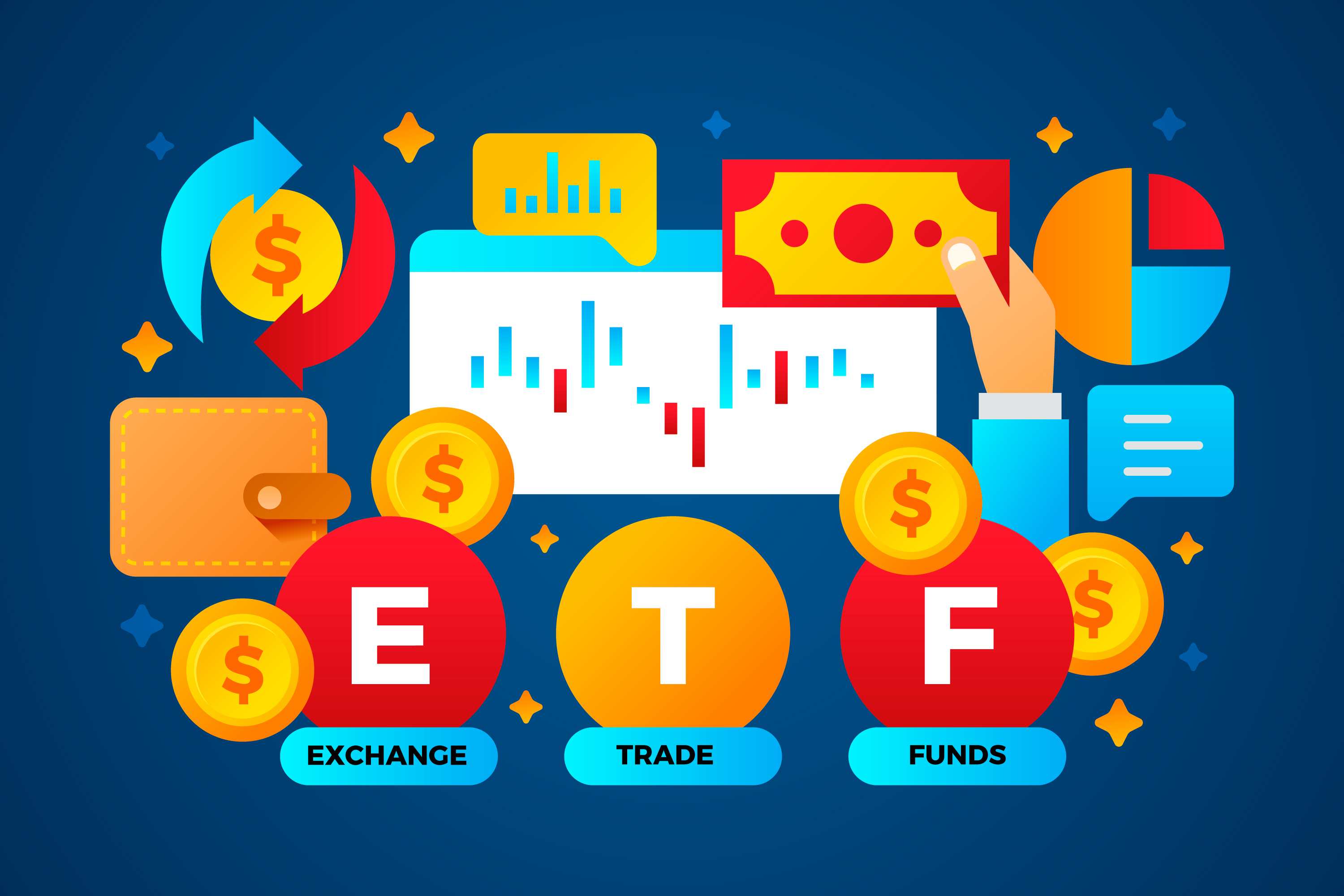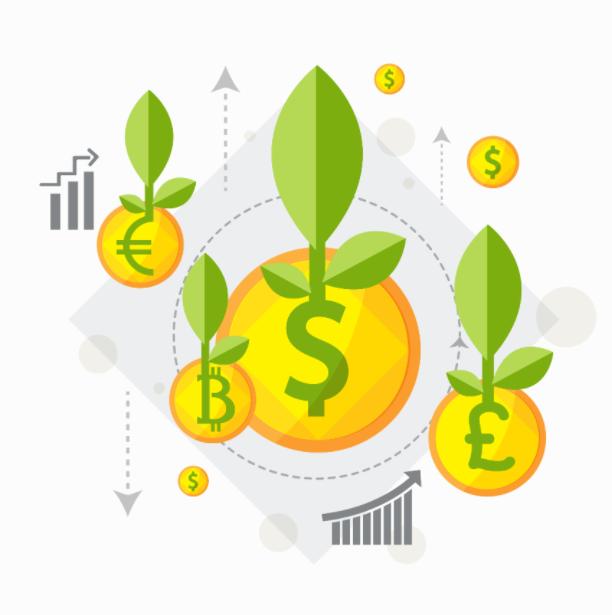TradingKey - Building a modern investment portfolio extends far beyond traditional allocations of stocks, bonds, and mutual funds. Experienced investors increasingly recognize the strategic value of exchange-traded funds (ETFs).
Nicholas Peach, Head of iShares, Asia Pacific at BlackRock, notes that global ETF assets under management have grown from $2.8 trillion in 2014 to $14.7 trillion in 2024. By 2030—within the next decade—this figure is projected to double to $30 trillion.
For investors planning to allocate to ETFs, mastering the foundational framework is essential for success. This article systematically breaks down the core definition, operational mechanics, and mainstream classifications of ETFs, equipping investors with clear knowledge to build a solid basis for future investment decisions.

(Source: Freepik)
What Is an Exchange-Traded Fund (ETF)?
An exchange-traded fund (ETF) is an investment vehicle listed on stock exchanges, designed to passively track the performance of a specific index, sector, commodity, or basket of assets. It is an innovative tool that combines the trading flexibility of stocks with the diversification benefits of funds.
Like ordinary stocks, ETFs can be bought and sold in real time. By holding securities in the same proportions as their target benchmark (such as a stock index or bond portfolio), ETFs provide investors with convenient access to a diversified basket of assets. This passive management structure avoids the high fees typical of actively managed funds, resulting in lower expense ratios and greater transparency for ETFs, with holdings disclosed daily.
The core value of ETFs lies in risk diversification and operational efficiency.
A single trade provides exposure to dozens or even hundreds of underlying assets (for example, one index ETF can instantly position you across an entire market), effectively balancing risks from volatility in any single asset.
At the same time, their trading flexibility allows investors to enter or exit positions at any time during market hours—something individual investors would struggle to replicate with self-constructed diversified portfolios. In short, an ETF functions as a "standardized asset package," delivering broad market exposure in a cost-efficient manner while balancing investment convenience with risk control.
How ETFs Operate
Core Participants
Fund Manager: Responsible for product design (e.g., BlackRock issuing IBIT) and adjusting holdings to track indices.
Authorized Participants (APs): Institutions like JPMorgan that handle creation/redemption in the primary market and provide secondary market liquidity.
Individual/Institutional Investors: Trade ETF shares via brokerage accounts.
Regulators: U.S. Securities and Exchange Commission (SEC, for securities ETFs), Commodity Futures Trading Commission (CFTC, for commodity futures ETFs), and Financial Industry Regulatory Authority (FINRA, for broker-dealers).
From Bulk Creation to Retail Trading
Fund construction begins by selecting underlying assets (e.g., index constituents, gold, or bonds) to form a basket replicating the target benchmark.
Authorized Participants exchange a basket of underlying assets (e.g., S&P 500 stocks or Bitcoin) for ETF shares with the fund, or reverse the process to redeem assets, dynamically adjusting market supply.
Once listed on stock exchanges, ETFs trade like stocks—investors can buy or sell shares in real time during market hours, with prices driven by supply and demand.
When an ETF’s market price deviates from its net asset value (NAV), APs arbitrage the gap to correct it. For example, if IBIT trades at $49 while its NAV is $48, APs create new shares and sell them at the higher price, compressing the premium and ensuring tight alignment between price and NAV.
Index Tracking: Precision Replication Strategies
To minimize tracking error, fund managers employ two approaches:
Full Replication (e.g., VOO tracking the S&P 500): Holds all 505 index constituents at exact weights.
Representative Sampling (e.g., Russell 3000 Index ETFs): Selects 800–1,000 representative stocks from 3,000+ index components.
When index constituents change (e.g., new additions), ETFs typically rebalance holdings within 1–3 days to maintain long-term performance alignment with the benchmark, with minor deviations arising only from management fees.
Regulatory Safeguards
Most U.S. ETFs are registered with the SEC under the Investment Company Act of 1940. Commodity futures ETFs fall under CFTC oversight, while physically backed commodity ETFs are regulated under the Securities Act of 1933.
SEC rules require ETFs to ensure 85% of assets can be liquidated within 7 days to guarantee liquidity. Diversified ETFs are limited to no more than 5% of total assets in any single stock to mitigate concentration risk. Full daily portfolio transparency is mandated (unlike mutual funds, which disclose holdings quarterly).
Types of ETFs
- By Investment Strategy
Passive ETFs:
Aim to precisely replicate the performance of a benchmark index without active stock selection or market timing. Portfolio managers mechanically adjust holdings only in response to index constituent changes, prioritizing low costs and high transparency.
For example, an S&P 500 ETF tracks the broad market by holding all index constituents, while sector ETFs replicate specific industry indices (e.g., technology or energy) to provide broad coverage.
Active ETFs:
Rely on portfolio managers’ expertise to actively select securities and adjust positions in pursuit of outperformance. These funds leverage professional insights to capture opportunities (e.g., overweighting high-growth AI companies) but carry significantly higher management fees than passive ETFs.
- By Underlying Assets
Equity ETFs: Track stock indices to provide equity exposure. While generally lower-risk than individual stocks, they typically carry higher risk than other ETF categories.
Sector ETFs: Built on the Global Industry Classification Standard (GICS), U.S. markets divide into 11 core sectors (e.g., Information Technology, Healthcare). Each sector comprises deeply focused public companies, allowing these ETFs to deliver highly targeted exposure to specific vertical industries through concentrated holdings in sector leaders.
Bond ETFs: Focus on fixed-income securities, including Treasury bonds, corporate debt, and municipal bonds. Their core value lies in delivering stable interest income streams. Unlike single bonds, they lack a fixed maturity date and operate perpetually, serving as key risk-balancing tools within portfolios.
Commodity ETFs: Track physical assets like gold, crude oil, or broad commodities (e.g., gold ETFs, oil ETFs). Investors gain efficient exposure to commodity markets and portfolio diversification without bearing storage or insurance costs associated with physical ownership.
International ETFs: Target overseas capital markets, offering a convenient and typically lower-risk approach to global investing.
Currency ETFs: Function similarly to money market funds, providing robust short-term returns while ensuring high liquidity. These products closely track major currency pairs (e.g., USD/EUR), serving dual roles: as speculative tools for macro-strategy investors betting on national economic policy shifts, and as hedging vehicles for import/export businesses managing exchange rate uncertainty in cross-border trade.

(Source: Freepik)
Cryptocurrency ETFs: Current investable crypto ETFs primarily focus on major coins, with most products offering indirect exposure via derivatives contracts or stocks of blockchain technology companies.
- Bitcoin ETFs: Spot Bitcoin ETFs approved by the SEC in 2024 hold physical Bitcoin assets directly, enabling investors to participate in price movements through standard brokerage accounts. Futures-based products launched in 2021 track prices via standardized contracts on the Chicago Mercantile Exchange (CME).
- Ethereum ETFs: In May 2024, the SEC authorized spot Ethereum ETFs for listing on Nasdaq, Cboe, and NYSE. By July 2024, nine ETFs received formal approval, allowing investors to gain Ether exposure without managing private keys.
- Other Types
Designed with derivatives, these carry substantially higher risk than conventional ETFs and suit professional investors.
Leveraged ETFs: Use derivatives like futures and swaps to deliver fixed multiples (typically 2x or 3x) of an index’s daily returns.
Example: A 2x leveraged S&P 500 ETF theoretically returns 2% if the index rises 1% in a single day—but also loses 2% if the index falls 1%. Due to mandatory daily leverage reset mechanics, long-term holding suffers from volatility decay, causing path-dependent losses.
Inverse ETFs: Legally structured as credit-linked debt securities (ETNs), they synthetically deliver single-day inverse returns of an index via derivatives (e.g., +1% product return when the index falls -1%).
Integrating ETFs into an Investment Portfolio
ETFs utilize standardized stock trading mechanisms, allowing investors to seamlessly integrate them into existing asset allocation frameworks.
Trading Mechanics and Platform Selection
ETFs trade identically to stocks, enabling seamless integration into current portfolio structures. When selecting a trading platform, systematically evaluate explicit commissions and hidden costs (such as account maintenance fees and data subscription charges). Prioritize comprehensive platforms offering $0-commission ETF trading and robust analytical tools.
Account Type Alignment
Account setup must strictly align with individual risk tolerance and investment stage:
Standard Cash Account: Operates without leverage, has no minimum funding requirement, and serves as an ideal starting point for risk-averse beginners.
Margin Account: Supports margin trading capabilities but requires maintaining a minimum net capital of $2,000 (per regulatory framework). Recommended only for investors with professional risk management expertise.
Tax-Advantaged Retirement Accounts (e.g., Traditional IRA and Roth IRA): Deliver long-term core value—Traditional IRAs enable tax-deductible contributions (taxed upon retirement withdrawals), while Roth IRAs use after-tax contributions (retirement gains fully tax-free). Investors meeting statutory income requirements should prioritize allocating to these accounts.
Top ETF Selections
Globally favored ETFs span diverse asset classes:
- Global Flagship Broad-Market ETFs
SPDR S&P 500 ETF (SPY): The world’s first listed ETF (1993), tightly tracks the S&P 500 Index with daily liquidity exceeding $10 billion, forming the cornerstone of core holdings.
iShares Russell 2000 ETF (IWM): Focuses on U.S. small-cap markets by replicating the Russell 2000 Index, providing an efficient tool to capture small business resilience during economic recoveries.
Invesco QQQ Trust (QQQ): Nicknamed "the Cube," this ETF tracks the tech-heavy Nasdaq-100 Index (including Apple, Microsoft, and other giants), exhibiting pronounced growth characteristics.
SPDR Dow Jones Industrial Average ETF (DIA): Known as "the Diamond," it follows the 30 blue-chip stocks of the Dow Jones Industrial Average (DJIA), representing traditional economic pillar industries.
- Sector and Thematic ETFs
Vanguard Information Technology ETF (VGT): Invests in software, semiconductors, and hardware sectors.
Vanguard Health Care ETF (VHT): Covers pharmaceuticals, medical devices, and biotechnology within the healthcare industry.
- Commodity ETFs
Map commodity prices through physical holdings or futures contracts, including:
Gold Trust ETF (GLD)
Silver Trust ETF (SLV)
United States Oil Fund (USO) for crude oil
United States Natural Gas Fund (UNG)
- Emerging Markets
iShares Core MSCI Emerging Markets ETF (IEMG): Broadly covers 26 countries including China (30%), India (15%), and South Korea (12%).


